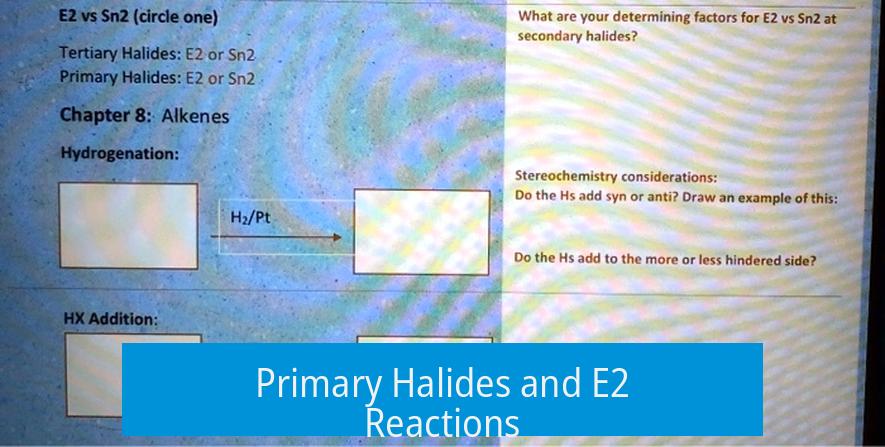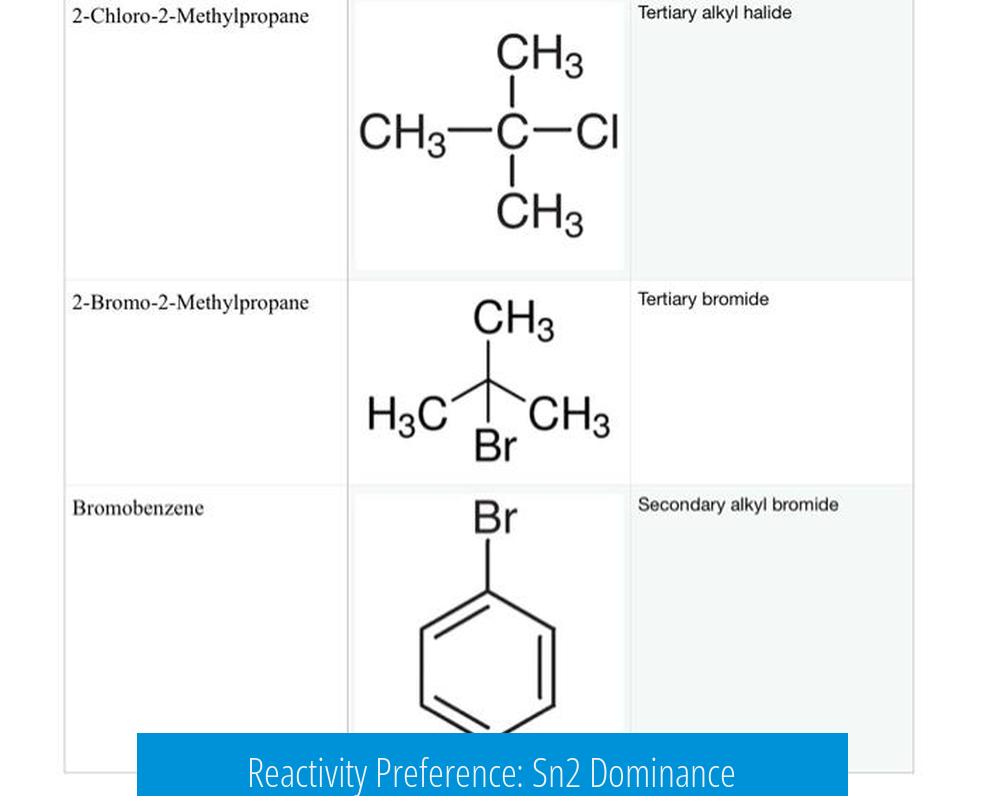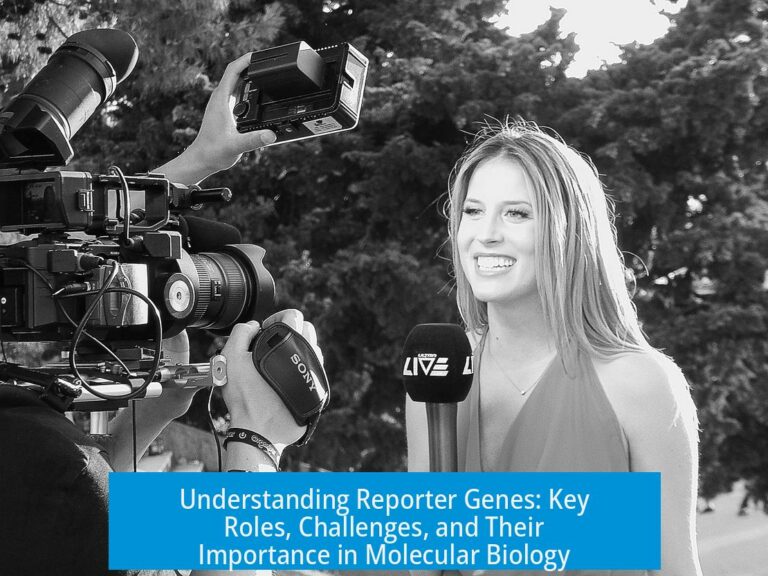Primary Halides and E2 Reactions

Primary halides generally favor Sn2 reactions over E2, but E2 elimination can still occur under specific conditions involving strong or bulky bases. The substrate’s steric environment and base type greatly influence the reaction pathway.
Reactivity Preference: Sn2 Dominance

Primary halides experience low steric hindrance around the reaction center. This factor makes them more susceptible to Sn2 nucleophilic substitution mechanisms rather than E2 elimination. The backside attack in Sn2 is easier without bulky groups blocking the approach.
E2 Reaction Conditions for Primary Halides

- Requires a strong base or a bulky base/nucleophile
- Common bulky bases include tert-butoxide (KOt-Bu) and lithium diisopropylamide (LDA)
- Any primary carbon can undergo E2 if these conditions are met
In the presence of these bases, the primary halide can undergo E2, despite Sn2 being more common. Bulky bases hinder nucleophilic substitution and favor elimination instead.
Product Distribution: Sn2 vs E2
E2 products from primary halides are minor compared to Sn2 products. This is primarily because the primary carbons stabilize the Sn2 mechanism more effectively. The strong preference is from the substrate structure rather than insufficient alkene stability.
Influence of Reaction Conditions
The product outcome shifts with changes in reaction conditions such as base strength, solvent, and temperature. Each factor can favor substitution or elimination routes. Careful control is necessary to predict the dominant pathway.
Zaitsev’s Rule in E2 Eliminations
E2 elimination typically produces the more substituted alkene, following Zaitsev’s rule. This tendency means secondary or tertiary carbons usually offer more stable double bonds. However, with sufficiently strong bases, primary substrates can also undergo E2 to form less substituted alkenes.
Mechanism and Kinetics
| Aspect | Description |
|---|---|
| Mechanism | Single-step, concerted elimination with a single transition state |
| Kinetics | Second order, dependent on concentrations of the alkyl halide and the base |
Structural Requirements for E2
For effective elimination, the proton to be removed and the leaving group must be coplanar, usually anti-periplanar, ensuring proper orbital alignment for double bond formation. This geometric requirement is essential for E2 transition state stabilization.
Key Points
- Primary halides favor Sn2 over E2 due to low steric hindrance.
- E2 elimination on primary halides requires strong or bulky bases.
- E2 products are minor relative to Sn2 on primary carbons.
- Zaitsev’s rule guides alkene product stability, favoring more substituted alkenes.
- Reaction conditions strongly influence elimination versus substitution outcomes.
- E2 proceeds via a concerted mechanism with second-order kinetics.
- Proper coplanar orientation of reacting atoms is crucial for E2.
Primary Halides and E2: Why the Odd Couple Sometimes Works
So, do primary halides go for E2 elimations? Yes, but only if the stars align just right. Generally, primary halides lean heavily towards Sn2 reactions due to low steric hindrance. But E2 elimination, the swift concerted one-step reaction, can still crash the party under some specific conditions.
Let’s unpack this quirky relationship and explore the chemistry behind the scenes, including when E2 makes a surprise appearance with primary halides.
Primary Halides: The Sn2 Champions
Imagine primary halides as the most accessible hosts in the neighborhood. Their less crowded nature allows the nucleophile to easily sneak in from the back and displace the leaving group. This ready accessibility drives Sn2 reactions predominately.
Because there’s less steric hindrance around the primary carbon, Sn2 reactions usually have the upper hand here. The nucleophile’s backside attack is swift and efficient, causing substitution over elimination.
But does that mean E2 elimination is completely off the table? Not so fast.
When Does E2 Step In?
E2 can still occur on primary carbons if the right players show up. The reaction demands either a strong base or a bulky base/nucleophile. So, no couch potato bases allowed here.
For example, strong bases like hydroxide (OH−), alkoxides (RO−), or even VERY bulky bases like potassium tert-butoxide (KOt-Bu) or lithium diisopropylamide (LDA) can coax a primary halide to undergo E2 elimination.
Why bulky bases? They find it harder to perform Sn2 substitution due to their size, so they favor elimination instead. It’s like trying to park a monster truck in a tight spot—it just doesn’t fit and you’re forced to take a different exit.
Sn2 Still Dominates—E2 Lurks in the Shadows
Even when E2 is possible, it remains a smaller player in the reaction landscape of primary halides. The substrate inherently favors Sn2 due to accessibility and steric reasons. E2 emerges only as a minor product.
Think of it as Sn2 being the major character in a sitcom, while E2 plays a quirky sidekick who occasionally steals the spotlight with a funny line. E2 doesn’t usually steal the show but don’t ignore its chances altogether.
Let’s Talk Zaitsev’s Rule and Primary Halides
E2 elimination tends to favor formation of the more substituted alkene—the so-called Zaitsev product. This means more substituted alkenes (secondary or tertiary) dominate elimination products.
But wait, how does this jive with primary halides? Aren’t their alkenes less substituted to begin with?
Good point! Zaitsev’s rule usually means E2 prefers substrates that form more substituted alkenes. However, with sufficiently strong bases—even non-bulky ones—primary halides can undergo E2 elimination. The resulting alkenes might be less substituted, but the strong base overpowers the usual preferences.
Bottom line: while elimination favors more substituted alkenes, strong bases can shake up the norm even with primary halides.
The Mechanistic Dance: Concerted E2
E2 proceeds via a single-step concerted mechanism, where the base abstracts a proton as the leaving group exits—all at once. The geometry matters! The β-hydrogen to be removed and the leaving group must be coplanar for the double bond to form properly.
In primary halides, this coplanarity might be limited by the fewer adjacent substituents, but it doesn’t prevent elimination altogether.
Kinetics and the Role of Base and Substrate
| Factor | Effect on E2 Rate |
|---|---|
| Base Strength & Bulkiness | Higher strength and bulk increase elimination likelihood |
| Substrate Type | Primary substrates favor Sn2, but bulky/strong bases enable E2 |
| Kinetics | Second order, depends on both base and alkyl halide concentration |
Because E2 rates depend on both the base and substrate, throwing in a powerful bulky base into a primary halo playground pushes the reaction from substitution toward elimination.
Practical Tips for Controlling the Outcome
- Want substitution (Sn2)? Use a small, strong nucleophile under moderate conditions with primary halides.
- Looking for elimination (E2)? Heat things up with bulky bases like KOt-Bu or LDA and keep the halide primary or secondary.
- Don’t Ignore Reaction Conditions! Solvent, temperature, base strength, and base bulkiness all influence the final result.
Here’s a quick example: primary alkyl bromide with sodium iodide in acetone is a classic Sn2 scene. Swap sodium iodide for potassium tert-butoxide and heat, and boom—the elimination shadows loom larger.
Summary: The Chemistry of Primary Halides and E2
Primary halides prefer Sn2 substitution because of low steric hindrance. That’s their main game. However, given strong or bulky bases and suitable reaction conditions, E2 elimination can occur, albeit as a minor pathway.
Zaitsev’s rule explains elimination preference for more substituted alkenes, but with a strong enough base, even primary halides can line up for elimination regardless of substitution level.
Understanding these nuances is crucial. Next time you mix a primary alkyl halide with a base, you know that the base isn’t just a base—it’s a director deciding if we see substitution drama or elimination action.
And here’s the kicker: the exact reaction conditions can tilt this balance. So don’t just toss reagents together and hope for the best. Think of yourself as a chemist-director, carefully orchestrating whether your primary halide star performs in an Sn2 blockbuster or an E2 thriller.
If you want to dive deeper, consider experimenting with different bases and concentrations in the lab to watch these reactions in action. Chemistry truly rewards curiosity!
What makes E2 reactions less common than Sn2 in primary halides?
Primary halides have less steric hindrance, favoring Sn2 over E2. E2 is possible but usually minor because the substrate suits Sn2 better.
When can E2 elimination occur in primary halides?
E2 happens if a strong or bulky base is present. Bases like t-butoxide or LDA can push elimination even in primary halides.
How does Zaitsev’s rule apply to E2 in primary halides?
E2 tends to give the more substituted alkene (Zaitsev product). But strong bases can force elimination on primary carbons, deviating from this trend.
What is the mechanism and rate law of E2 in primary halides?
E2 is a one-step concerted reaction with a single transition state. Its rate depends on both base and halide, showing second order kinetics.
Why is the alignment of leaving groups important for E2 in primary halides?
The leaving groups need to be coplanar for the double bond to form correctly. This geometric requirement ensures elimination proceeds efficiently.





Leave a Comment